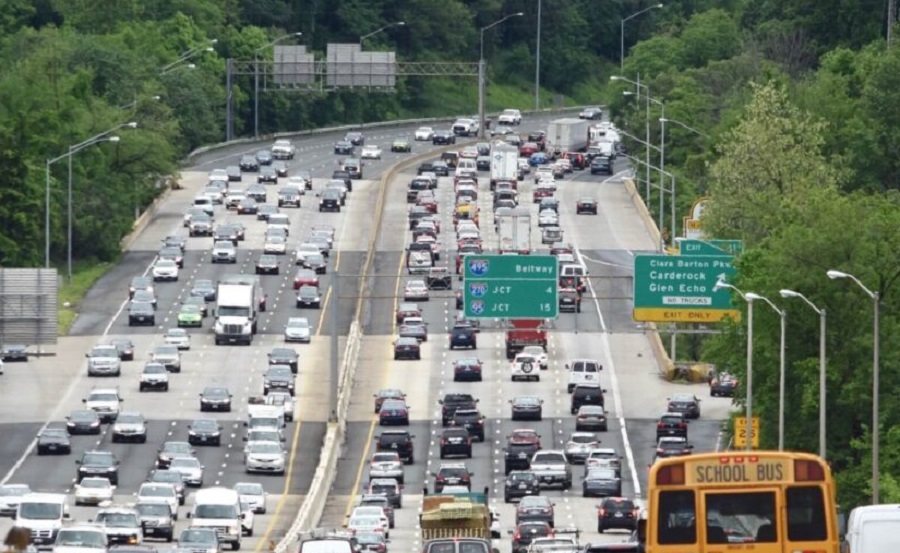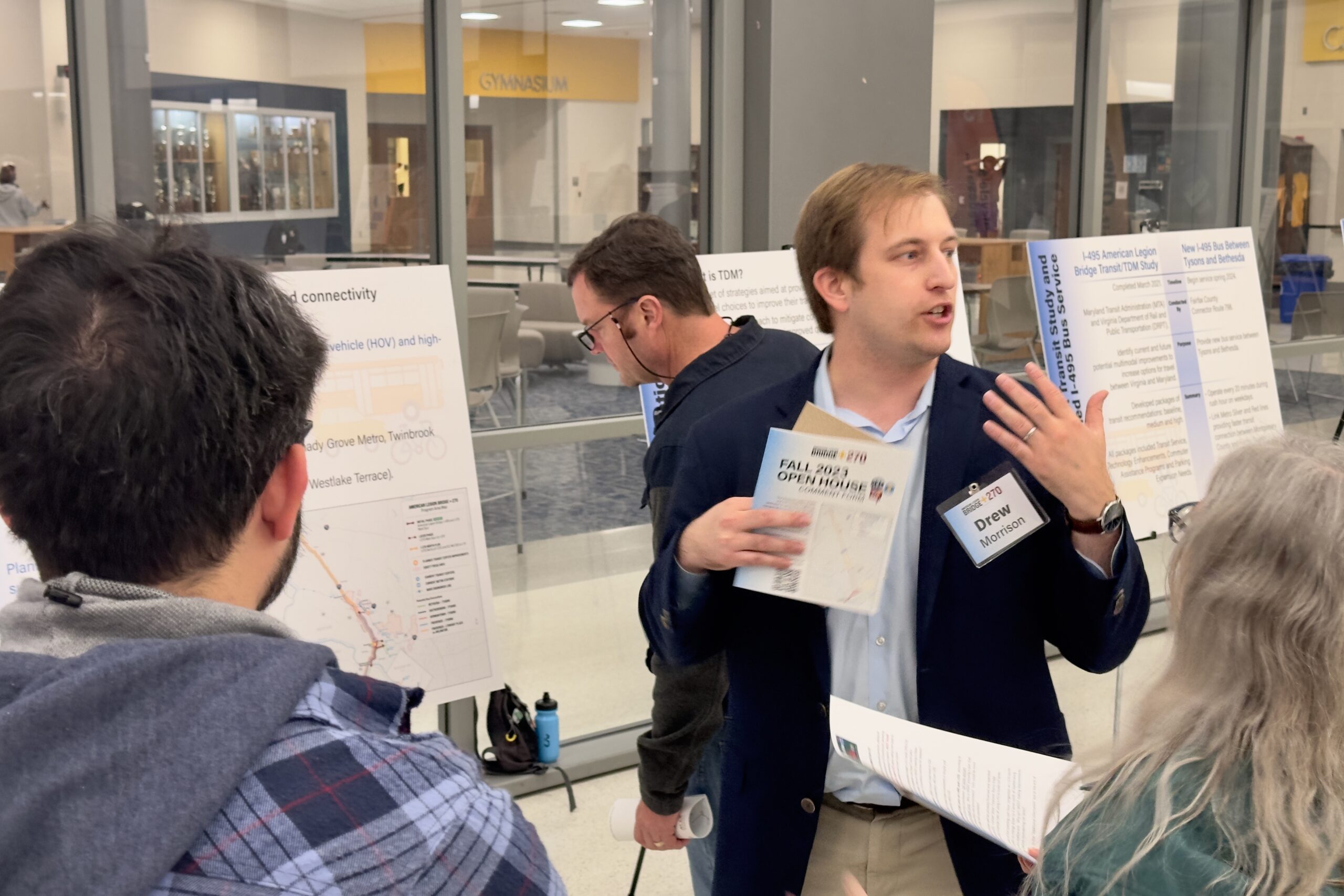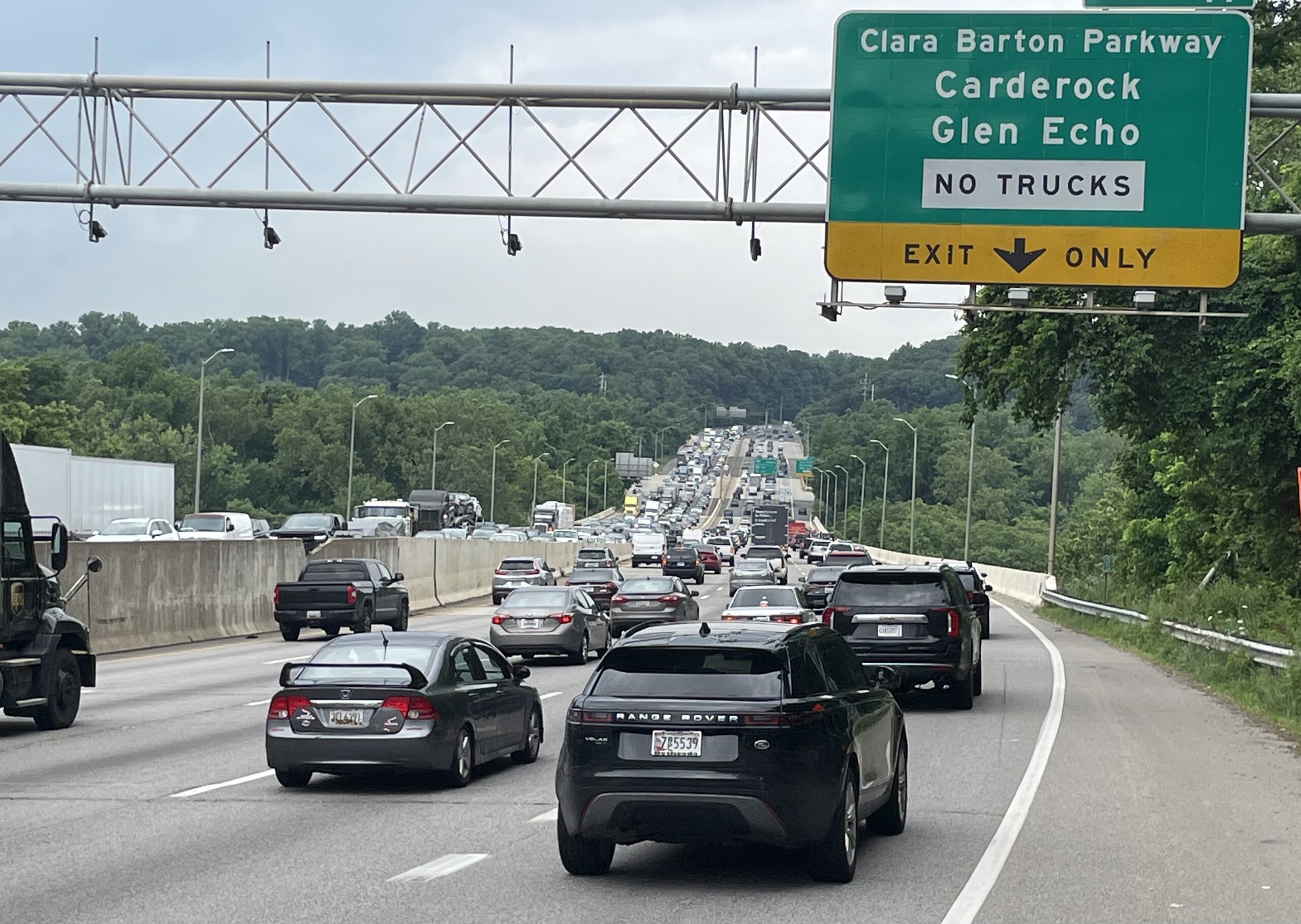Opinion: Toll lane traffic relief promises rest on Alice-in-Wonderland logic

By Ben Ross
The writer is chair of the Maryland Transit Opportunities Coalition.
‘If we didn’t fix it, that proves it wasn’t broken.’ This Alice-in-Wonderland logic is how the Maryland Department of Transportation now defends its claim that its toll lane project will bring “traffic relief” to I-270 and the American Legion Bridge.
Responding earlier this month to a Sierra Club lawsuit, MDOT conceded that traffic forecasts it presented to the public as the output of a computer model developed by the Washington-area Transportation Planning Board were really just made up. The $2.4 billion grant proposal MDOT sent to the U.S. Dept. of Transportation this week relies on those forecasts as the basis for no less than 73% of the project’s claimed benefits.
That by itself should be reason to deny the grant and reverse the federal approval of the project’s environmental study.
And there’s more. MDOT’s explanation of how it came up with its traffic numbers, which it issued only after it got caught falsely passing them off as computer output, is nonsense.
These revelations are the belated outcome of a letter I sent on behalf of the Maryland Transit Opportunities Coalition to the Federal Highway Administration two years ago. The letter pointed out blatant errors in a draft of the environmental study. Among these errors was a prediction that widening the American Legion Bridge would take traffic off U.S. 50 to Annapolis.
MDOT admitted that this was a mistake and published different numbers in the final study. After a deep dive into the report, I sent a second letter showing that the new numbers could not have been generated by their computer model and must have been changed by hand. I requested an investigation into possible scientific fraud.
The Federal Highway Administration sent my letter to the Volpe Center, its research lab in Cambridge, Massachusetts. Volpe confirmed that the numbers had been changed by hand. It said that while manual changes in computer output are sometimes justified, in this case it “could not assess their plausibility or validity.”
The federal agency approved the state’s environmental study of the I-495/I-270 toll lane project anyway. This approval is what the Sierra Club lawsuit challenges.
At that point, MDOT tried to retroactively justify the changes it had made in the numbers. As a result of my initial letter, it said, it had discovered a mistake in the draft report. Traffic on the ramps connecting the Beltway to the Greenbelt Metro station had been double-counted. That mistake caused the draft report to predict more traffic than the highway could possibly handle. The problem was fixed in the final report, MDOT asserted, by reducing the number of cars going in and out of the Greenbelt Metro interchange.
This explanation doesn’t hold water. The final report didn’t reduce the number of cars using that interchange. It increased it.
There’s another problem. Greenbelt was just one of many places where the MDOT forecast put more cars on roads than the roads could possibly hold. The Sierra Club’s traffic modeling expert, Norm Marshall, laid this out in his comments on the draft report. But the only place MDOT did anything to correct their error was Greenbelt.
In its legal brief, MDOT admits this. It says that it reviewed the model predictions and made corrections. But it didn’t make its changes where the traffic volume exceeded the road capacity, it made them where two different computer models gave different answers.
The brief goes on to say “That MDOT’s review did not find more locations like Greenbelt actually disproves Plaintiffs’ claim that ‘unrealistically high traffic volumes… pervade the model.'” In other words, what MDOT says here is — if we didn’t fix it, it must not have been broken.
Major infrastructure investments like the toll lanes should be based on sound, unbiased traffic predictions. The traffic forecasts used by the previous Maryland Administration to justify this project are wrong. It’s time for Gov. Wes Moore (D) to tell MDOT to rerun and correct them. Until that happens, no more consideration should be given to implementing this inherited mistake.




 Creative Commons Attribution
Creative Commons Attribution